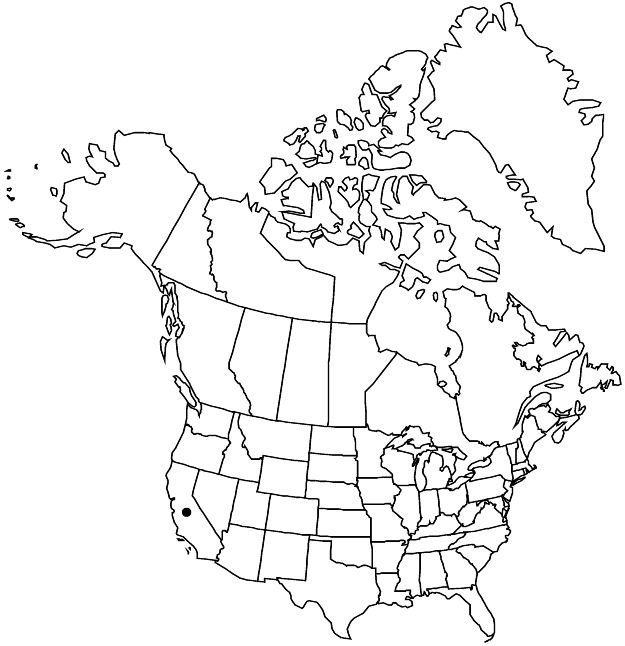familyRosaceae
subfamilyRosaceae subfam. Rosoideae
genusIvesia
sectionIvesia sect. Ivesia
speciesIvesia lycopodioides
Difference between revisions of "Ivesia lycopodioides var. scandularis"
Novon 17: 324. 2007.
Common names: White Mountains ivesia
Endemic
Basionym: Horkelia scandularis Rydberg
Synonyms: Ivesia lycopodioides subsp. scandularis (Rydberg) D. D. Keck Potentilla lycopodioides var. scandularis (Rydberg) J. T. Howell
Treatment appears in FNA Volume 9. Treatment on page 232.
FNA>Volume Importer |
FNA>Volume Importer |
||
| Line 19: | Line 19: | ||
|name=Ivesia lycopodioides subsp. scandularis | |name=Ivesia lycopodioides subsp. scandularis | ||
|authority=(Rydberg) D. D. Keck | |authority=(Rydberg) D. D. Keck | ||
| − | }}{{Treatment/ID/Synonym | + | }} {{Treatment/ID/Synonym |
|name=Potentilla lycopodioides var. scandularis | |name=Potentilla lycopodioides var. scandularis | ||
|authority=(Rydberg) J. T. Howell | |authority=(Rydberg) J. T. Howell | ||
| Line 37: | Line 37: | ||
|elevation=3000–4000 m | |elevation=3000–4000 m | ||
|distribution=Calif. | |distribution=Calif. | ||
| − | |discussion=<p>Variety scandularis is the only variety that occurs in the White Mountains of Inyo and Mono counties, California; scattered populations occur also on the eastern side of the Sierra Nevada. Leaflet lobes are intermediate in size between those of the other two varieties and usually are tipped with a single bristle to 2 mm.</p> | + | |discussion=<p>Variety scandularis is the only variety that occurs in the White Mountains of Inyo and Mono counties, California; scattered populations occur also on the eastern side of the Sierra <i>Nevada</i>. Leaflet lobes are intermediate in size between those of the other two varieties and usually are tipped with a single bristle to 2 mm.</p> |
|tables= | |tables= | ||
|references= | |references= | ||
| Line 61: | Line 61: | ||
|publication year=2007 | |publication year=2007 | ||
|special status=Endemic | |special status=Endemic | ||
| − | |source xml=https://jpend@bitbucket.org/aafc-mbb/fna-data-curation.git/src/ | + | |source xml=https://jpend@bitbucket.org/aafc-mbb/fna-data-curation.git/src/8f726806613d60c220dc4493de13607dd3150896/coarse_grained_fna_xml/V9/V9_354.xml |
|subfamily=Rosaceae subfam. Rosoideae | |subfamily=Rosaceae subfam. Rosoideae | ||
|tribe=Rosaceae tribe Potentilleae | |tribe=Rosaceae tribe Potentilleae | ||
Revision as of 18:16, 18 September 2019
Stems decumbent to ascending, 0.5–1.5 dm. Basal leaves 3–8 cm; leaflets tightly overlapping, short-hirsute, lobes obovate, 1–3 mm, apical setae (0–)0.5–1(–2) mm. Cauline leaves 0–1. Inflorescences usually ± capitate, 3–15(–20)-flowered, 1–2(–3) cm diam. Flowers 6–12 mm diam.; petals broadly obovate, 3–5 × 2–3 mm; filaments 1.2–1.5 mm; styles 2–3 mm.
Phenology: Flowering summer.
Habitat: Moist slopes, fellfields, in high-elevation sagebrush communities, subalpine to alpine conifer woodlands, alpine tundra
Elevation: 3000–4000 m
Discussion
Variety scandularis is the only variety that occurs in the White Mountains of Inyo and Mono counties, California; scattered populations occur also on the eastern side of the Sierra Nevada. Leaflet lobes are intermediate in size between those of the other two varieties and usually are tipped with a single bristle to 2 mm.
Selected References
None.
Lower Taxa
None.
